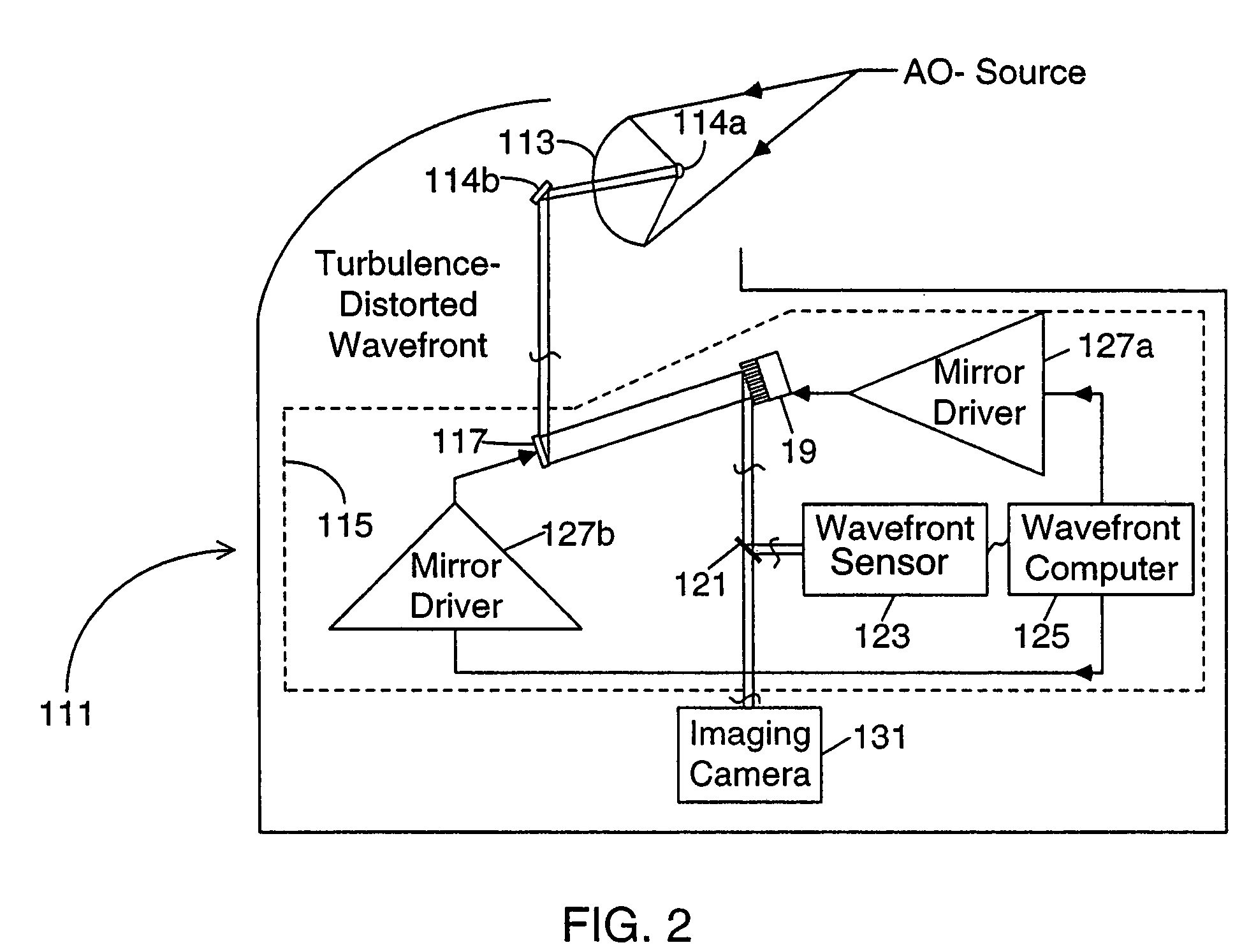Optical instrument employing a wavefront sensor capable of coarse and fine phase measurement capabilities during first and second modes of operation
a wavefront sensor and optical instrument technology, applied in the field of wavefront sensors, can solve problems such as image blur, large phase step measurement errors, and sensitive shack-hartmann methods
- Summary
- Abstract
- Description
- Claims
- Application Information
AI Technical Summary
Benefits of technology
Problems solved by technology
Method used
Image
Examples
Embodiment Construction
[0046]Referring to the figures in the accompanying Drawings, the preferred embodiments of the present invention will now be described in great detail, wherein like elements will be indicated using like reference numerals.
[0047]As shown in FIG. 2, light from a nominal point source above the atmosphere enters the primary mirror 113 of the telescope 111 and is focused and directed by mirrors 114A and 114B to an adaptive optics subsystem 115. The adaptive optics subsystem 115 includes a tilt mirror 117, a deformable mirror 19 disposed between its source (the mirrors 114A and 114B), and also an electronic imaging camera 131 for capturing an image of the nominal point source. A beam splitter 121 directs a portion of the light directed to the imaging camera by the mirrors 117, 119 to a wavefront sensor 123 that measures the phase distortion in the wavefronts of light directed thereto using the novel wavefront sensing method of the present invention. A computer 125 cooperates with mirror dr...
PUM
 Login to View More
Login to View More Abstract
Description
Claims
Application Information
 Login to View More
Login to View More - R&D
- Intellectual Property
- Life Sciences
- Materials
- Tech Scout
- Unparalleled Data Quality
- Higher Quality Content
- 60% Fewer Hallucinations
Browse by: Latest US Patents, China's latest patents, Technical Efficacy Thesaurus, Application Domain, Technology Topic, Popular Technical Reports.
© 2025 PatSnap. All rights reserved.Legal|Privacy policy|Modern Slavery Act Transparency Statement|Sitemap|About US| Contact US: help@patsnap.com



